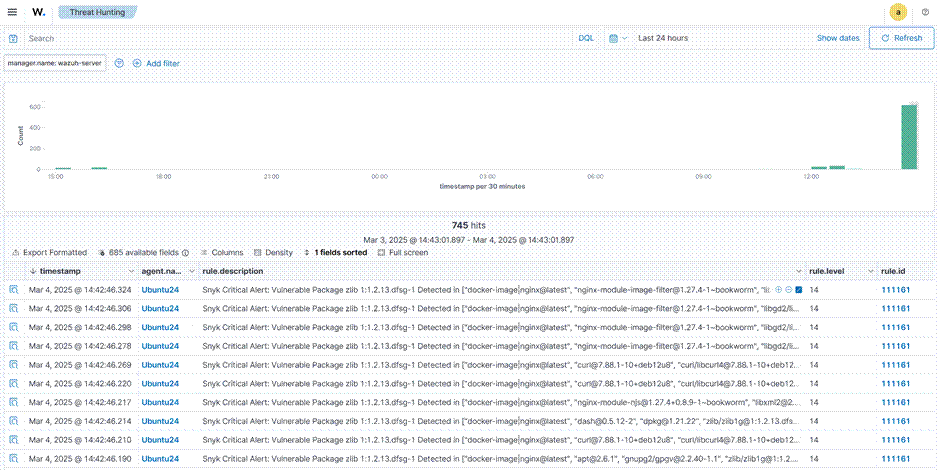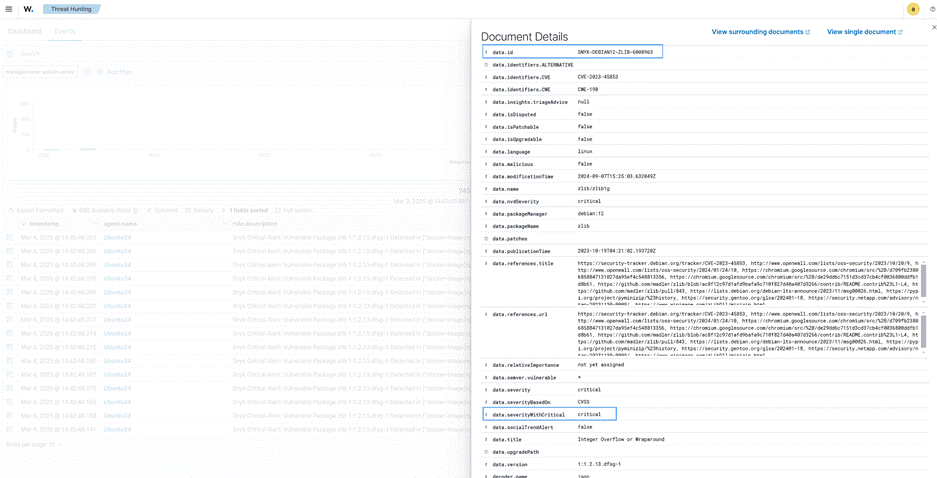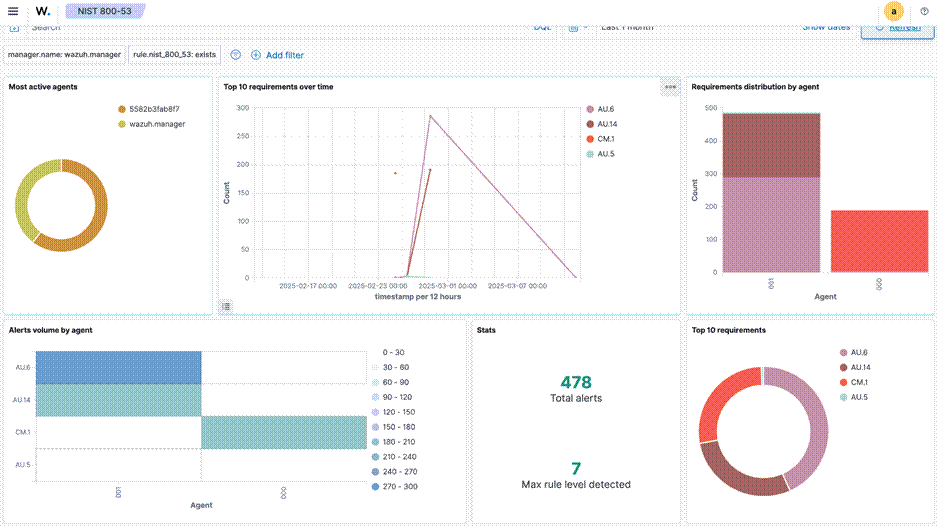DevSecOps, short for Development, Security, and Operations, is a methodology that integrates security practices into software Development Operations (DevOps). It emphasizes that security should be a shared responsibility across development, operations, and security teams rather than an isolated phase at the end of the software development lifecycle.
By including security from the start, DevSecOps ensures that applications are built, tested, and deployed with security in mind, reducing vulnerabilities and enhancing overall system resilience.
Security in Development Operations
Some organizations implement security in the later phases of the development process. This delay in security integration allows unpatched or undiscovered vulnerabilities to persist within the system, increasing the risk of exploitation by malicious actors.
DevSecOps integrates security throughout the Continuous Integration and Continuous Delivery (CI/CD) pipeline, ensuring vulnerabilities are identified and remediated early. A critical aspect of DevSecOps is scanning applications for vulnerabilities early in the development lifecycle.
To support this, teams need to implement several steps that enhance security monitoring and help aggregate security events from the tools and infrastructure within the pipeline.
These steps include:
1. Monitor CI/CD tools: This includes the systems and tools for building, testing, and deploying software, such as GitHub Actions, GitLab CI/CD, Jenkins, and CircleCI. By continuously monitoring these tools, teams can detect security threats early and strengthen the overall security of a development pipeline.
2. Monitor the infrastructure hosting your CI/CD platform: This includes the host environment where the developed software and its infrastructure run. Examples include cloud platforms, on-premise servers, and container orchestration systems like Kubernetes. Ensuring these environments are secure helps prevent unauthorized access and system compromise.
Wazuh is an open source SIEM and XDR platform that provides out-of-the-box capabilities to improve DevSecOps. Wazuh helps organizations monitor and protect their infrastructure by collecting and analyzing logs, detecting threats, and identifying vulnerabilities across endpoints, servers, cloud environments, and applications.
Several highlights of how Wazuh improves DevSecOps processes are described below.
DevSecOps, short for Development, Security, and Operations, is a methodology that integrates security practices into software Development Operations (DevOps). It emphasizes that security should be a shared responsibility across development, operations, and security teams rather than an isolated phase at the end of the software development lifecycle.
By including security from the start, DevSecOps ensures that applications are built, tested, and deployed with security in mind, reducing vulnerabilities and enhancing overall system resilience.
Monitor CI/CD tools
CI/CD tools are platforms and services that automate integrating, testing, and deploying code changes, helping software development workflows. Examples of such tools include GitHub Actions, GitLab CI/CD, and Jenkins, which automate different stages of the development pipeline.
Docker, while not a CI/CD tool itself, is commonly used in CI/CD workflows to create reproducible environments for testing and deployment.
Wazuh has out-of-the-box capabilities for monitoring your CI/CD tools, including GitHub Actions and Docker. You can expand these capabilities by integrating your Wazuh deployment with third-party application development security solutions. The following section shows examples.
Automating security scans for your software environment
Implementing automated security scans for your software environment ensures vulnerabilities are detected and addressed early in the development lifecycle, reducing risks before deployment. The post on integrating Wazuh with DefectDojo shows one way of achieving this.
DefectDojo collects findings from multiple application security solutions, while Wazuh aggregates these findings across multiple CI/CD environments.
The Wazuh-Snyk integration is another example of implementing security monitoring in your software development/runtime environment, particularly containerized environments. Using the Wazuh command module, you can schedule Snyk CLI scans on Docker images.
These scans detect vulnerabilities, and the findings are forwarded to the Wazuh server for further analysis. This process enables early detection and remediation of security flaws within your application development lifecycle.


Monitoring security in your code repository
You can also configure Wazuh to monitor activities performed in your repository. The monitoring GitHub documentation provides a guide on how to configure Wazuh to monitor GitHub activities, such as:
- Access to your organization or repository settings.
- Changes in repository permissions.
- User addition or removal in an organization, repository, or team.
- GitHub events such as cloning, fetching, and pushing.

Monitor the infrastructure hosting your CI/CD platform
Wazuh includes out-of-the-box capabilities for monitoring the infrastructure that runs your software development environment. These capabilities include vulnerability detection, file integrity monitoring, log analysis, security configuration assessment, and more.
The section below covers two capabilities that improve your DevSecOps processes.
Detecting vulnerabilities in your infrastructure
Wazuh detects vulnerabilities across endpoints and applications using its Vulnerability Detector module and Cyber Threat Intelligence (CTI) repository. The Wazuh CTI provides context on known attack patterns, indicators of compromise (IOCs), and exploit tactics.
Leveraging the Wazuh threat intelligence feeds helps security teams identify, assess, and respond to evolving risks before they can be exploited.

Ensuring compliance with security and compliance frameworks
Wazuh simplifies compliance management by monitoring systems for misconfigurations, policy violations, and security risks that could impact regulatory adherence. It provides built-in rules and audit capabilities for PCI DSS, HIPAA, GDPR, NIST, and TSC frameworks.
Wazuh helps organizations meet regulatory requirements by leveraging its log analysis, file integrity monitoring, and vulnerability detection capabilities.
These features enable continuous monitoring for security risks and policy violations, allowing organizations to improve their security posture across cloud, on-premises, and hybrid environments.

Conclusion
Wazuh centralizes security insights from infrastructure, applications, and containerized environments to enhance threat detection and response. It offers built-in compliance reporting, integrates with third-party solutions, and leverages threat intelligence.
These capabilities help security teams prioritize risk management, strengthen security posture, and comply with industry regulations.
As DevSecOps practices continue to evolve, Wazuh offers a flexible, open source platform that integrates security throughout the development and operations lifecycle.
Start using Wazuh today to strengthen your DevSecOps strategy, gain real-time security insights, generate compliance reports, and detect vulnerabilities before exploitation.
Sponsored and written by Wazuh.